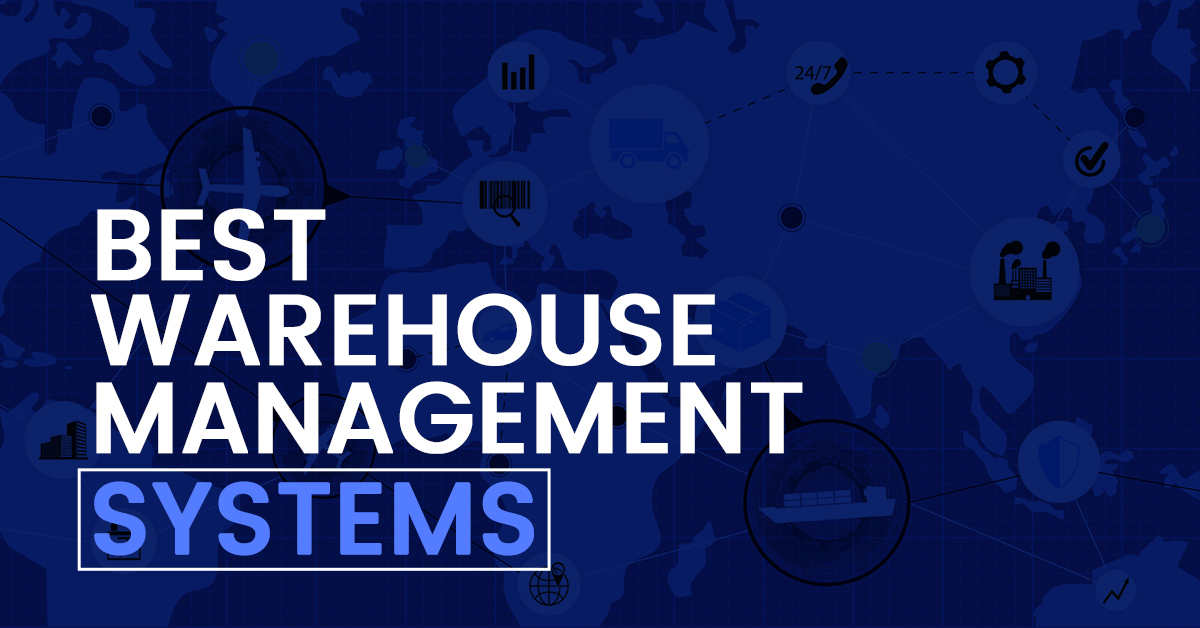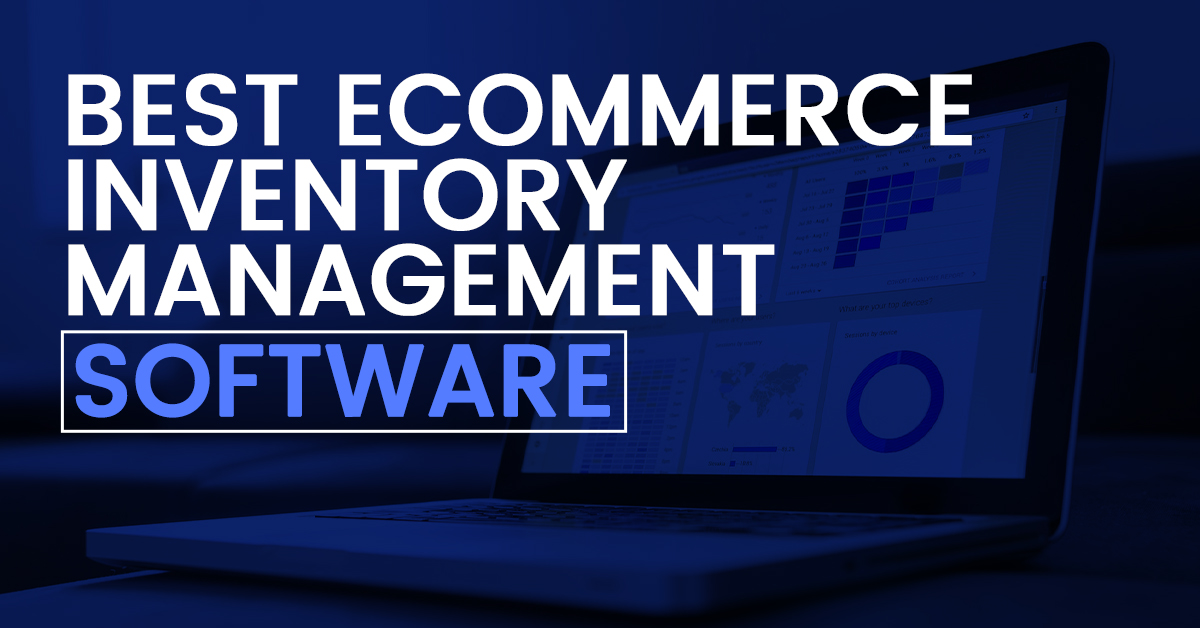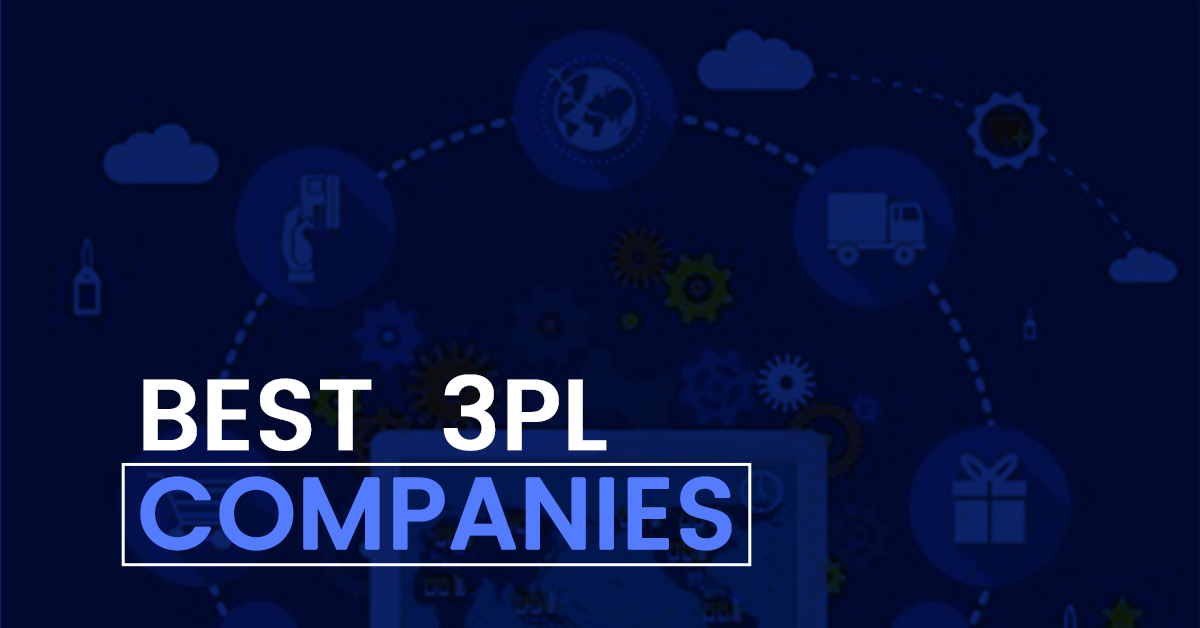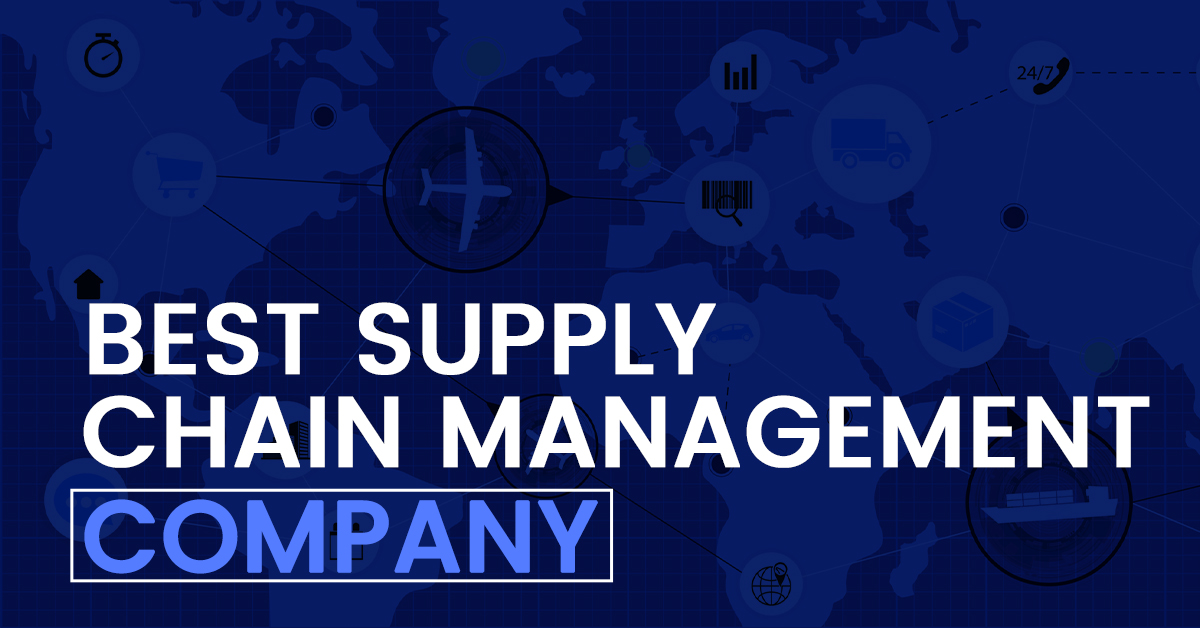
6 Best Warehouse Management Systems to Save You Time and Money
With the e-commerce boom, the need for better warehouse management systems has never been greater, and they are no longer just a nice-to-have but an
Home » Logistics & Supply Chain

With the e-commerce boom, the need for better warehouse management systems has never been greater, and they are no longer just a nice-to-have but an

Ecommerce inventory software is the best way to keep track of your products. By using this software, you can streamline your inventory management process and

The dynamics of the late 20th century necessitated 3PL companies. This was because of the globalization of commerce and the rise in trade between different

In recent years, supply chain management (SCM) has become increasingly crucial for businesses of all sizes. As a business owner, you have set your business
Logistics and Supply Chain Software, often referred to as LSC Software, is a crucial tool for businesses involved in managing the movement and storage of goods throughout the supply chain.
One of the primary advantages of this software is its ability to streamline and optimize various logistics processes. It helps in planning and managing the transportation of goods, including route optimization, shipment tracking, and managing inventory across the supply chain.
LSC Software often includes features for warehouse management, enabling businesses to efficiently organize and track inventory within warehouses. This involves tasks such as inventory control, picking, packing, and shipping goods to ensure smoother operations.
Moreover, this software can offer insights and analytics that help in forecasting demand, managing inventory levels, and identifying potential areas for improvement within the supply chain. This data-driven approach aids in making informed decisions to enhance efficiency and reduce costs.
Additionally, some Logistics and Supply Chain Software may integrate with other systems like Enterprise Resource Planning (ERP) software or Customer Relationship Management (CRM) systems to provide a more comprehensive view of operations and improve coordination across different departments.
In summary, Logistics and Supply Chain Software play a pivotal role in optimizing logistics operations, managing inventory, improving coordination, and leveraging data to make informed decisions within the supply chain, ultimately contributing to more efficient and effective business operations.
TMS facilitates the planning, execution, and optimization of transportation activities. It includes features such as route planning, shipment tracking, and carrier management, ensuring the smooth movement of goods from point A to point B.
WMS focuses on optimizing warehouse processes. It helps in managing inventory, order fulfillment, and warehouse operations. This software ensures accurate tracking of stock levels, efficient order picking, and streamlined logistics within the warehouse.
Inventory management software enables businesses to monitor and control their stock levels. It includes features like real-time tracking of inventory, demand forecasting, and order management, ensuring that products are available when needed without overstocking.
OMS streamlines the entire order processing workflow. It manages customer orders, from order placement to fulfillment, ensuring accuracy, timely delivery, and customer satisfaction. OMS often integrates with other systems, such as inventory and shipping, for a cohesive process.
SRM software focuses on managing relationships with suppliers. It includes tools for supplier performance evaluation, contract management, and collaboration, ensuring a transparent and efficient supply chain with reliable and responsive suppliers.
Demand planning software assists in forecasting future demand for products. By analyzing historical data and market trends, businesses can optimize their production schedules, inventory levels, and distribution strategies to meet customer demand effectively.
Fleet management software is crucial for organizations with a fleet of vehicles. It helps in monitoring vehicle location, maintenance schedules, fuel efficiency, and driver behavior. This ensures the safety of assets, reduces operational costs, and improves overall fleet performance.
Supply chain visibility software provides real-time insights into the entire supply chain. It enables stakeholders to track the movement of goods, monitor inventory levels, and identify potential issues, allowing for proactive decision-making and efficient problem resolution.
Procurement software streamlines the procurement process by automating tasks such as supplier selection, purchase order creation, and invoice management. It enhances efficiency, reduces errors, and ensures compliance with procurement policies.
Logistics and supply chain software facilitates precise and real-time inventory management. It helps in monitoring stock levels, tracking product movements, and ensuring optimal stock levels to meet demand, minimizing the risk of stockouts or overstock situations.
Automated order processing capabilities streamline the entire order fulfillment process. From order placement to delivery, logistics software ensures accuracy, reduces processing time, and enhances customer satisfaction by providing timely updates on order status.
Efficient route planning and optimization are crucial for minimizing transportation costs and improving delivery timelines. Logistics software helps in identifying the most cost-effective and time-efficient routes, reducing fuel consumption and enhancing overall fleet management.
Logistics software offers comprehensive warehouse management features, enabling businesses to organize and optimize warehouse operations. This includes inventory tracking, picking optimization, and efficient space utilization, leading to improved overall warehouse efficiency.
One of the significant advantages of logistics software is the ability to provide real-time visibility into the entire supply chain. This visibility allows for better decision-making, proactive issue resolution, and improved responsiveness to changes in demand or disruptions.
By automating and optimizing various processes, logistics and supply chain software helps in reducing operational costs. This includes lower transportation costs, minimized inventory holding costs, and enhanced overall resource utilization.
Effective communication and collaboration among various stakeholders in the supply chain are essential. Logistics software facilitates seamless communication between suppliers, manufacturers, distributors, and retailers, ensuring a synchronized and well-coordinated supply chain network.
Adherence to regulatory requirements and risk mitigation are critical in the logistics and supply chain industry. Software solutions assist in ensuring compliance with regulations, managing risks, and implementing strategies to address potential disruptions in the supply chain.
The upfront cost often includes licensing fees for the chosen logistics and supply chain software. This fee grants access to the software’s core functionalities and is typically based on the number of users or the scale of the operation.
Integrating the software into existing systems and tailoring it to meet specific business requirements incurs additional costs. Implementation may involve data migration, configuration, and customization to ensure seamless incorporation into the organization’s workflow.
Continuous maintenance and support services are essential for keeping the software up-to-date and resolving any issues that may arise. This ongoing cost is often a percentage of the initial licensing fees and ensures the software remains efficient and secure.
Training employees to effectively use the logistics and supply chain software is a crucial investment. This expense covers training sessions, materials, and possibly external trainers to ensure that the workforce can utilize the software optimally.
Some logistics software solutions may require additional hardware or servers to operate efficiently. Investing in the necessary infrastructure, including servers and networking equipment, is a consideration for organizations implementing such solutions.
Ensuring a robust and reliable internet connection is vital for real-time data exchange within the supply chain software. Connectivity costs, including internet service fees, play a role in maintaining seamless operations.
As businesses grow, the need for scalable logistics and supply chain solutions becomes apparent. Expenses related to scaling up the software, adding more users, or upgrading to a more comprehensive version are part of the ongoing costs associated with these solutions.
Logistics and supply chain software often needs to integrate with other enterprise systems such as Enterprise Resource Planning (ERP) software or Customer Relationship Management (CRM) systems. The costs associated with ensuring smooth integration with these systems should be considered.
Adhering to industry regulations and ensuring data security may require additional features or modifications to the software. Investments in compliance measures and security protocols are essential to meet industry standards.
Manufacturers and distributors employ logistics and supply chain software to optimize the movement of goods from production facilities to distribution centers and ultimately to retailers or end customers. This software aids in inventory management, order processing, and distribution logistics.
Retailers, both traditional and online, leverage logistics software to manage inventory, monitor demand, and streamline order fulfillment. E-commerce companies, in particular, rely on these tools for efficient shipping and tracking of products to ensure a smooth customer experience.
Companies in the transportation and logistics industry use specialized software to manage the movement of goods across various modes of transportation. This includes route optimization, real-time tracking, and scheduling to enhance overall operational efficiency.
Warehousing and fulfillment centers utilize logistics software to optimize storage, manage inventory levels, and facilitate efficient order fulfillment. These tools help in organizing warehouse operations and ensuring timely dispatch of products.
Professionals responsible for overseeing the entire supply chain, including procurement, production, and distribution, benefit from logistics software. These tools provide visibility into the entire supply chain, aiding in decision-making and strategic planning.
Third-party logistics providers offer outsourced logistics services to other companies. They use logistics software to manage and coordinate various aspects of the supply chain, providing clients with streamlined and cost-effective logistics solutions.
Freight forwarders and customs brokers utilize logistics software to manage international shipments, navigate customs regulations, and ensure the smooth flow of goods across borders. This helps in reducing delays and optimizing cross-border logistics.
Professionals involved in procurement and sourcing activities use logistics and supply chain software to optimize supplier relationships, monitor inventory levels, and ensure the timely availability of raw materials or components.
Oracle’s SCM Cloud offers a suite of supply chain management applications. It covers various aspects such as inventory management, demand planning, order fulfillment, and logistics management.
JDA Software provides end-to-end supply chain and retail solutions. It includes demand planning, warehouse management, transportation optimization, and retail planning tools.
Manhattan Associates offers supply chain and omnichannel solutions. Its software covers warehouse management, transportation management, and distribution centers for retailers and logistics providers.
Descartes provides logistics and supply chain management solutions. Its offerings include transportation management, global trade compliance, and route planning for efficient logistics operations.
Infor SCM provides a suite of supply chain management solutions catering to various industries. It covers supply chain planning, procurement, inventory management, and logistics.
BluJay Solutions offers a logistics and supply chain platform with modules for transportation management, global trade management, warehouse management, and supply chain visibility.
| Feature | Description |
| Inventory Management | Track, manage, and optimize inventory levels, locations, stock movements, and replenishment processes. |
| Order Processing | Automate order fulfillment, processing, and monitoring from placement to delivery. |
| Warehouse Management | Optimize warehouse operations, including layout planning, picking, packing, and shipping. |
| Transportation Management | Efficiently plan, optimize, and track transportation routes, carrier management, and logistics costs. |
| Supplier Relationship Management | Manage supplier information, performance, contracts, and collaboration for seamless procurement. |
| Demand Forecasting | Predict future demand based on historical data, trends, and market analysis to plan inventory levels. |
| Analytics and Reporting | Generate reports, insights, and analytics to optimize logistics processes and make data-driven decisions. |
| Reverse Logistics | Manage returns, repairs, and product recalls efficiently while minimizing costs and maximizing value. |
| Real-time Tracking | Track shipments and inventory in real-time, providing visibility across the supply chain network. |
| Integration Capabilities | Seamless integration with ERP systems, CRMs, and other software to ensure data flow and consistency. |
| Software | Integration | Description |
| SAP ERP | Warehouse Management | Integrates with SAP’s ERP system to streamline warehouse operations, managing inventory, orders, and logistics in real-time. |
| Oracle SCM Cloud | Transportation Management | Integrates with Oracle’s SCM Cloud to optimize transportation planning, execution, and freight payment, enhancing overall supply chain efficiency. |
| Microsoft Dynamics 365 Supply Chain Management | Supplier Collaboration | Seamlessly connects with Dynamics 365 SCM to facilitate collaboration with suppliers, ensuring smooth communication and supply chain visibility. |
| IBM Sterling | Order Management | Integrates with IBM Sterling to enhance order fulfillment, manage complex orders, and optimize inventory allocation and distribution. |
| Manhattan Associates | Distribution Management | Integrates with Manhattan’s distribution software, optimizing warehouse processes, inventory control, and order fulfillment for retailers and distributors. |
| Descartes | Global Trade Management | Integrates with Descartes for comprehensive global trade compliance, managing customs, tariffs, and trade documentation for international shipments. |
| Blue Yonder (formerly JDA Software) | Demand Planning | Integrates with Blue Yonder for demand forecasting and planning, enabling more accurate inventory management and replenishment strategies. |
| HighJump (Korber) | Supply Chain Visibility | Integrates with HighJump for end-to-end supply chain visibility, enabling tracking and monitoring of goods across the entire supply chain network. |
Companies are increasingly adopting software solutions that provide real-time tracking and monitoring of goods in transit. This trend helps enhance overall visibility, allowing businesses to make informed decisions, optimize routes, and promptly address any disruptions.
Leveraging AI and ML enables predictive analytics, demand forecasting, and optimization of various processes. These technologies enhance decision-making, automate routine tasks, and improve overall efficiency in supply chain operations.
Blockchain is being employed to enhance security and transparency in supply chain processes. It ensures the integrity of transactions, minimizes fraud, and provides a tamper-proof record of every transaction, fostering trust among stakeholders.
RPA automates repetitive and rule-based tasks in warehouses, such as order processing and inventory management. This trend is contributing to increased efficiency, reduced errors, and faster order fulfillment.
Cloud-based software offers scalability, flexibility, and accessibility from any location. This trend allows businesses to streamline operations, collaborate more efficiently, and adapt to changing market demands without significant infrastructure investments.
Rising focus on sustainability and environmentally-friendly logistics practices.
Software solutions are being designed to support sustainable logistics practices, including route optimization to reduce emissions, eco-friendly packaging solutions, and tools for tracking and managing carbon footprints.
Digital twins create virtual replicas of physical assets and processes, enabling companies to simulate different scenarios, optimize routes, and improve overall decision-making in the supply chain.
Software platforms that facilitate collaboration among suppliers, manufacturers, distributors, and retailers are gaining popularity. These platforms enhance communication, data sharing, and coordination across the entire supply chain network.
Transportation management software helps businesses plan, optimize, and execute the movement of goods. It includes features such as route planning, carrier selection, and real-time tracking. This software ensures the timely and cost-effective transportation of goods from suppliers to consumers.
Efficient inventory management is vital for preventing stockouts and overstock situations. Inventory management systems help organizations track stock levels, manage reorder points, and automate the ordering process. This ensures that the right amount of stock is available at the right time.
Warehouse management software focuses on optimizing warehouse processes. It includes functionalities like order picking, packing, and shipping, as well as inventory tracking within the warehouse. This software enhances the overall efficiency of warehouse operations.
Demand forecasting tools use historical data and analytics to predict future demand for products. By understanding demand patterns, businesses can optimize inventory levels, production schedules, and distribution processes, ultimately reducing costs and minimizing excess inventory.
SRM systems help businesses manage their relationships with suppliers effectively. These systems often include features for supplier performance tracking, contract management, and collaboration tools to enhance communication and collaboration with suppliers.
Order processing software automates the order fulfillment process, from order placement to delivery. It includes features like order tracking, invoicing, and order status updates. This streamlines the entire order-to-cash cycle, improving customer satisfaction.
For enhanced visibility in the supply chain, track and trace solutions allow businesses to monitor the movement of goods in real-time. This is especially crucial for industries with strict regulatory requirements, providing transparency and accountability throughout the supply chain.
Analytics and reporting systems provide valuable insights into logistics and supply chain performance. These tools help businesses analyze key performance indicators, identify areas for improvement, and make informed decisions to optimize overall supply chain efficiency.